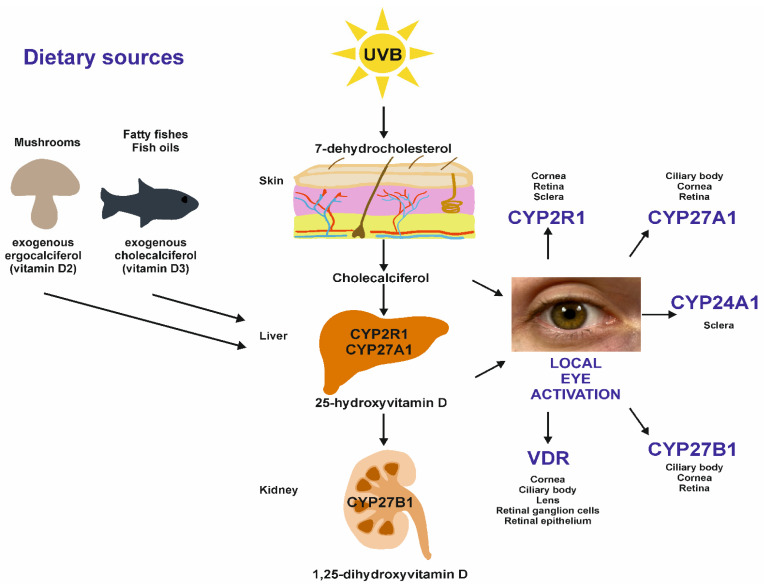Figure 1.
A schematic view of vitamin D metabolism, including local eye activation of vitamin D. Eye cells possess the enzymes to activate and regulate vitamin D metabolism. The figure specifies eye structures having the vitamin D receptor (VDR) and enzymes taking part in the metabolism of vitamin D. In addition, the schematic shows the dietary sources of vitamin D. Sundried mushrooms and fatty fishes, including fish oils, are the sources of ergocalciferol (vitamin D2) and cholecalciferol (vitamin D3), respectively. Both are metabolized to 25-hydroxyvitamin D2/D3 in the liver and, subsequently, to other metabolites. Nevertheless, vitamin D3 is almost twice as potent as ergocalciferol in increasing serum 25-hydroxyvitamin D, and the supplementation of vitamin D2 does not result in as high a blood level of 25-hydroxyvitamin D [16,17].

